FOND DU LAC, WI
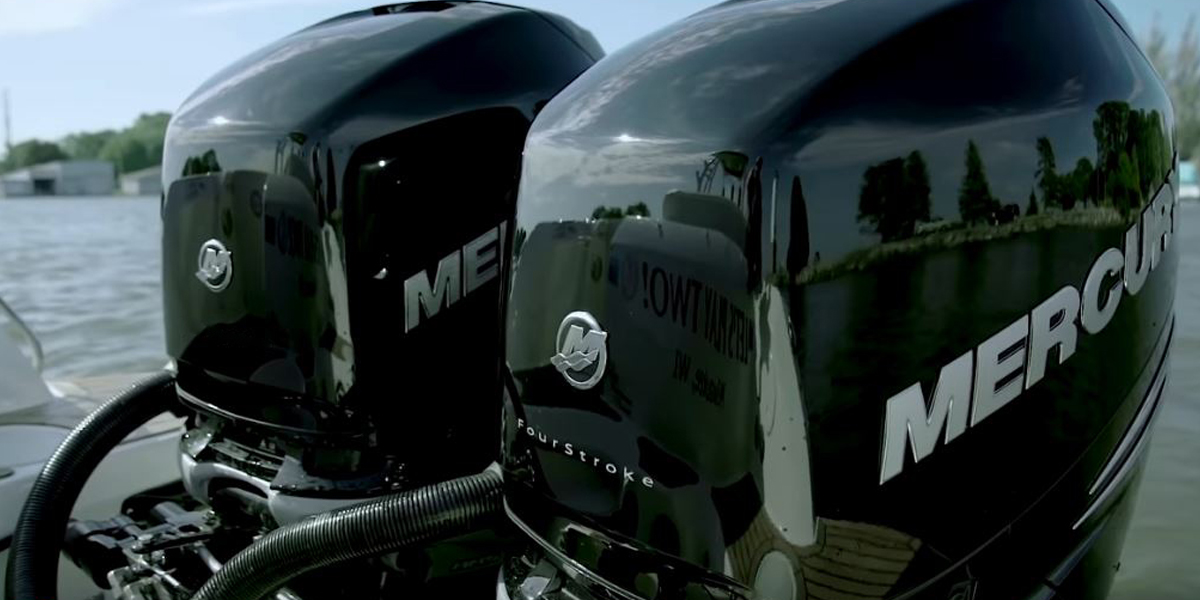
Automation Solutions of America worked with Mercury Marine to develop an Automatic Guided Vehicle (AGV) solution for their V12 Verado engine assembly line that was affordable, user friendly, flexible, and incorporated their already proven AGV system. Over the course of 14 months, the team developed, refined, and finalized an AGV design that would meet Mercury’s needs and incorporated it into their manufacturing process.
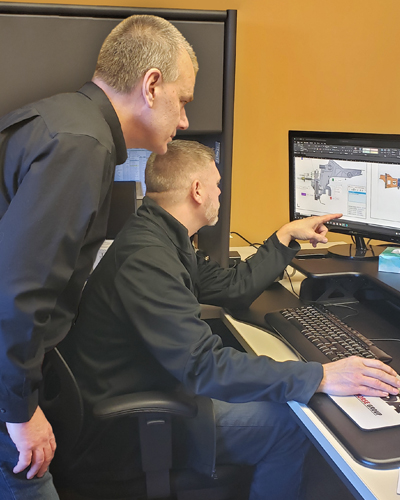
Reviewing Design Calculations
CLEARLY DEFINING THE OBJECTIVE
ASA’s Project Engineers work with customers to better define project objectives and develop solutions. This process typically starts by identifying start and finish parameters, determining how an item will be attached, loaded and unloaded during the automation process, and accounting for external factors like payload and center of gravity. There’s a lot of collaboration between the customer and the design team during this time to be sure that the concept takes into account existing assembly processes and is on track to meet their needs. From there, initial concepts are created and presented to the customer. Several rounds of feedback and revisions take place. Depending on the number of revisions, the final concept can look very different from the initial concepts. Once the final concept has been approved, the ASA team moves on to preparing a quote to produce the project.
AGV DESIGN
Mercury Marine AGVs are a prime example of ASA’s collaborative concept design approach. Mercury’s new prototype shipping skid played a key role in concept design. Through constant collaboration with the Mercury shipping department, an initial AGV design concept was created using a one-piece AGV cab and cart that pivoted the back portion to complete automated tasks. This concept was on the right track but had payload limitations. A second concept was created that utilized two carts. A motor cart to hold the engine and a second LHF (Load Handling Frame) to hold everything else. The LHF provided the overall stability needed to safely rotate, lift, and transport the engine through the various stations in the assembly line, but still didn’t address payload limitations. Next, the design team added a four-bar link assembly to merge the motor cart and LHF into one cart. This separated the load from the drive wheel on the motor cart and created consistent weight distribution. These factors combined allowed for a bigger payload. With the cart design complete, the ASA team tackled finer details like adjusting the shipping skid plate and wheelbase to accommodate for the weight dispersement when the motor is in different positions.
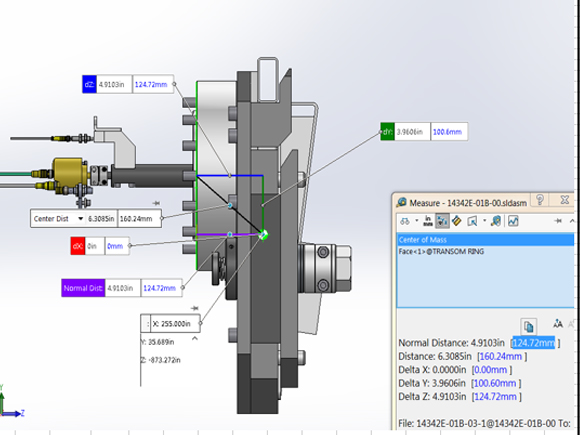
Sizing Calculations
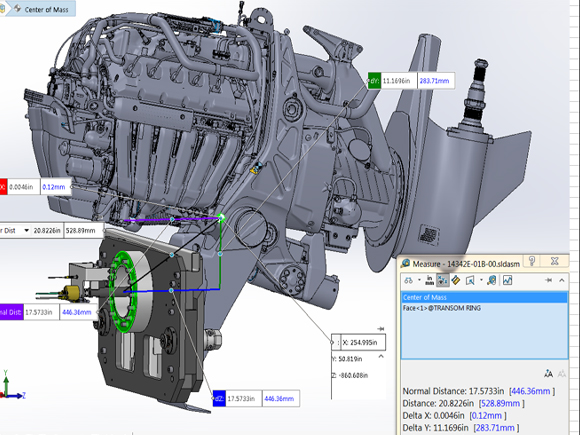
Center of Gravity
COMMUNICATION AND SAFETY
The final AGV design incorporates a Load Handling Frame (LHF) towed by Webb’s AGV 300T. It’s imperative that the two communicate with each other to ensure the motor’s in a safe position before the cart advances. Each LHF has a Programmable Logic Controller (PLC) that communicates with the main line over WiFi. This ensures the LHF knows its location on the line and its limits so the engine can’t interfere with station tooling or touch the floor. E-stops were also wired into the safety circuit of the AGV. When an E-Stop is pressed (on either the AGV or the LHF), the unit will immediately lose power.
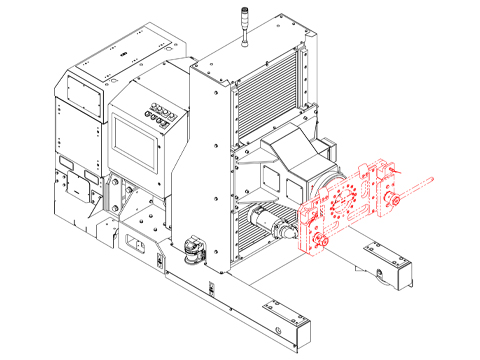
Final LHF Concept Drawing
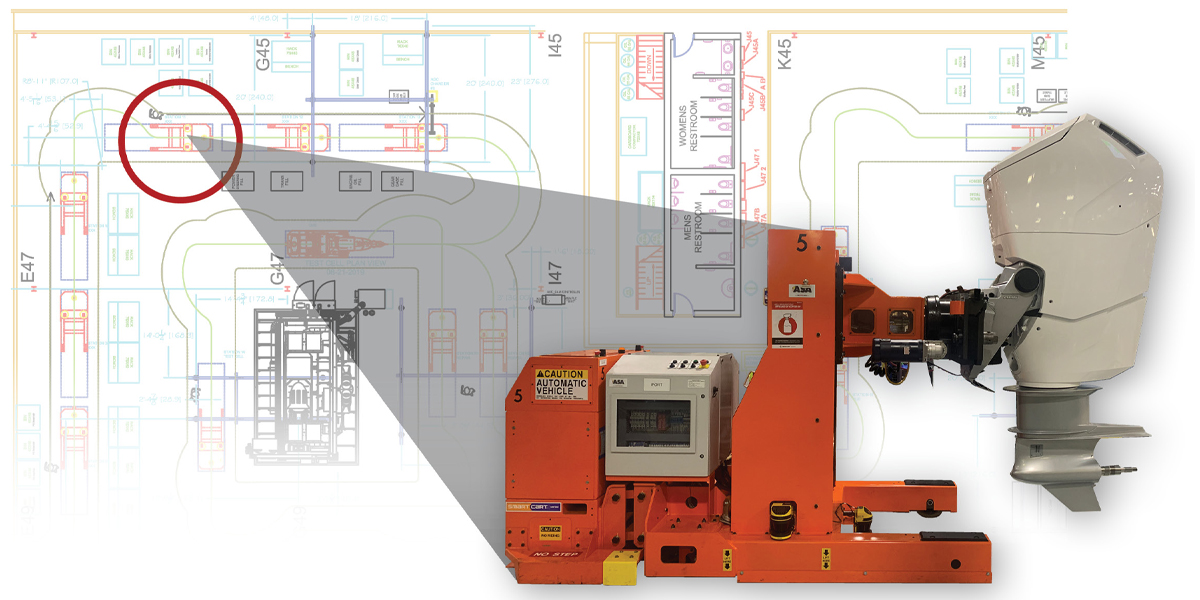
Completed AGV/Assembly Line Overlay
INCORPORATING AGV DESIGN INTO THE MANUFACTURING PROCESS
With the AGV design complete, the ASA team turned their attention to the manufacturing process. They developed a 22-station assembly line that guides the AGVs from start to finish utilizing flexible magnetic tape applied to the floor. In order to take this from concept to reality, the team had to program start and stop logic so AGVs could advance independently of one another without incident and determine how to unload the completed motor. Another concern that needed to be addressed was power. Since AGVs are battery powered, the team needed to provide a charging solution that didn’t interfere with manufacturing. This was accomplished by strategically placing battery charging stations along the assembly line. The AGVs pass over the stations and make connection to charge their batteries periodically throughout the manufacturing process.
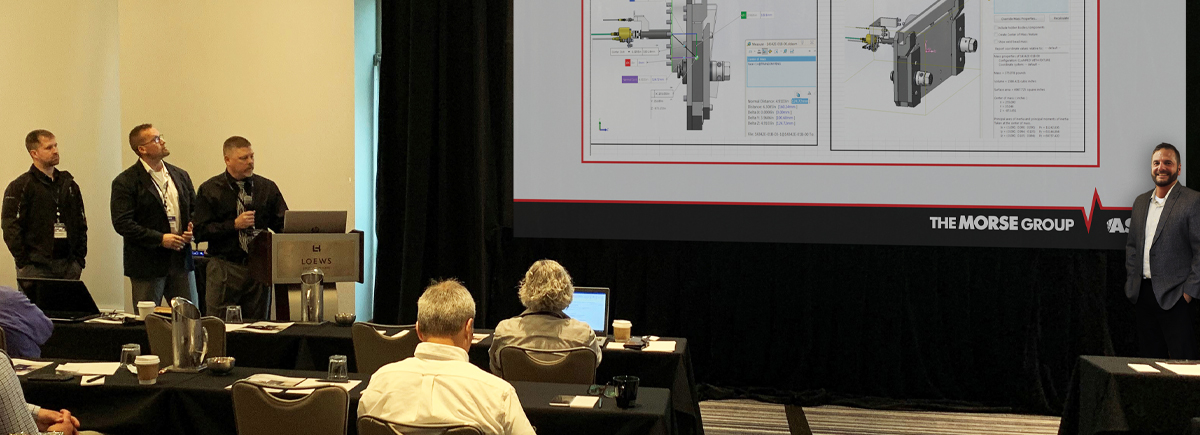
MEET THE TEAM
The ASA Mercury Marine project team included Kellen James, Scott Moyle, and Norris Anderson under the leadership of Doug Linstead and Eric Stockman. Members of the ASA team recently had the opportunity to present this project at the VAR Conference where they brought home the award for Top Value Added Reseller in 2020!